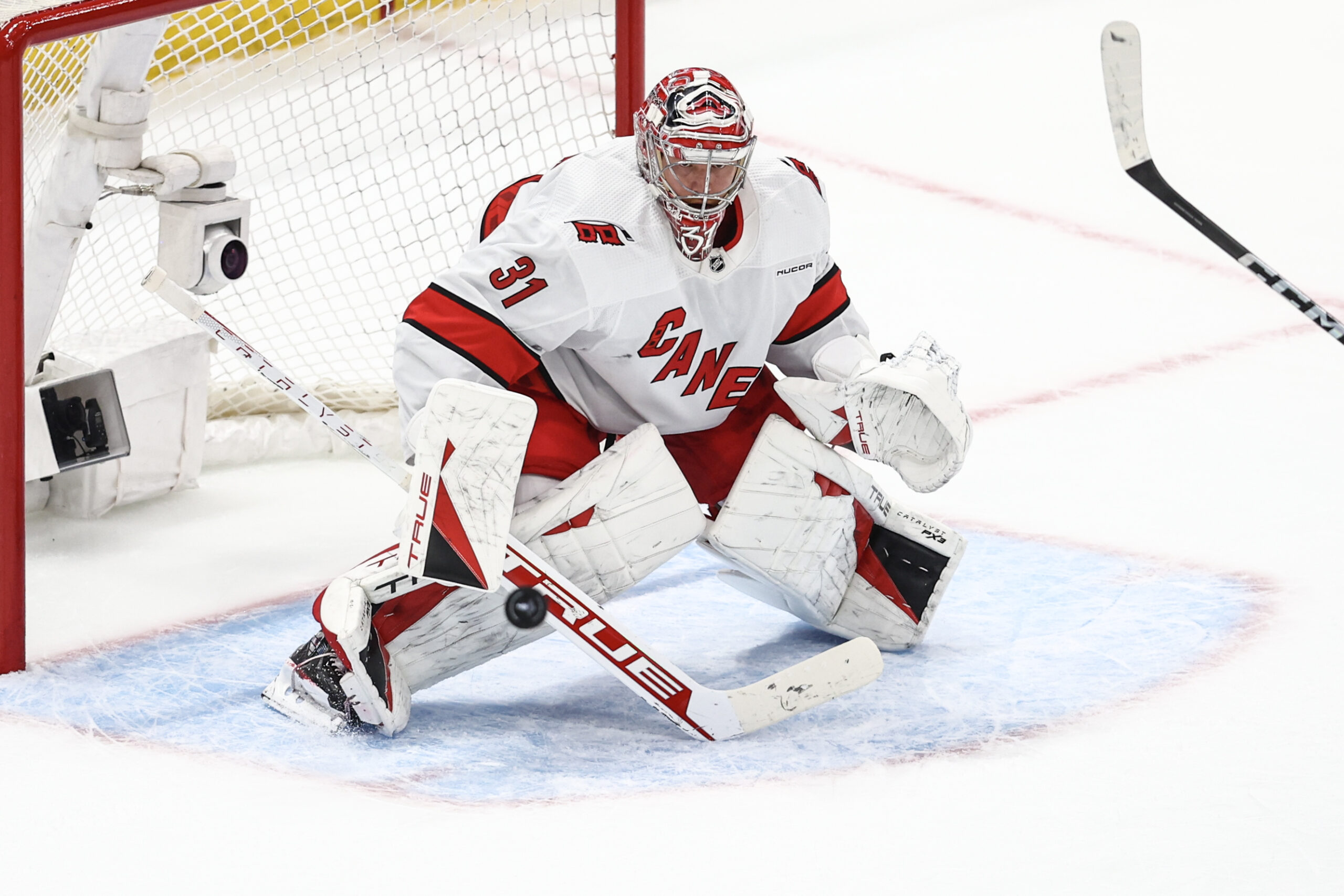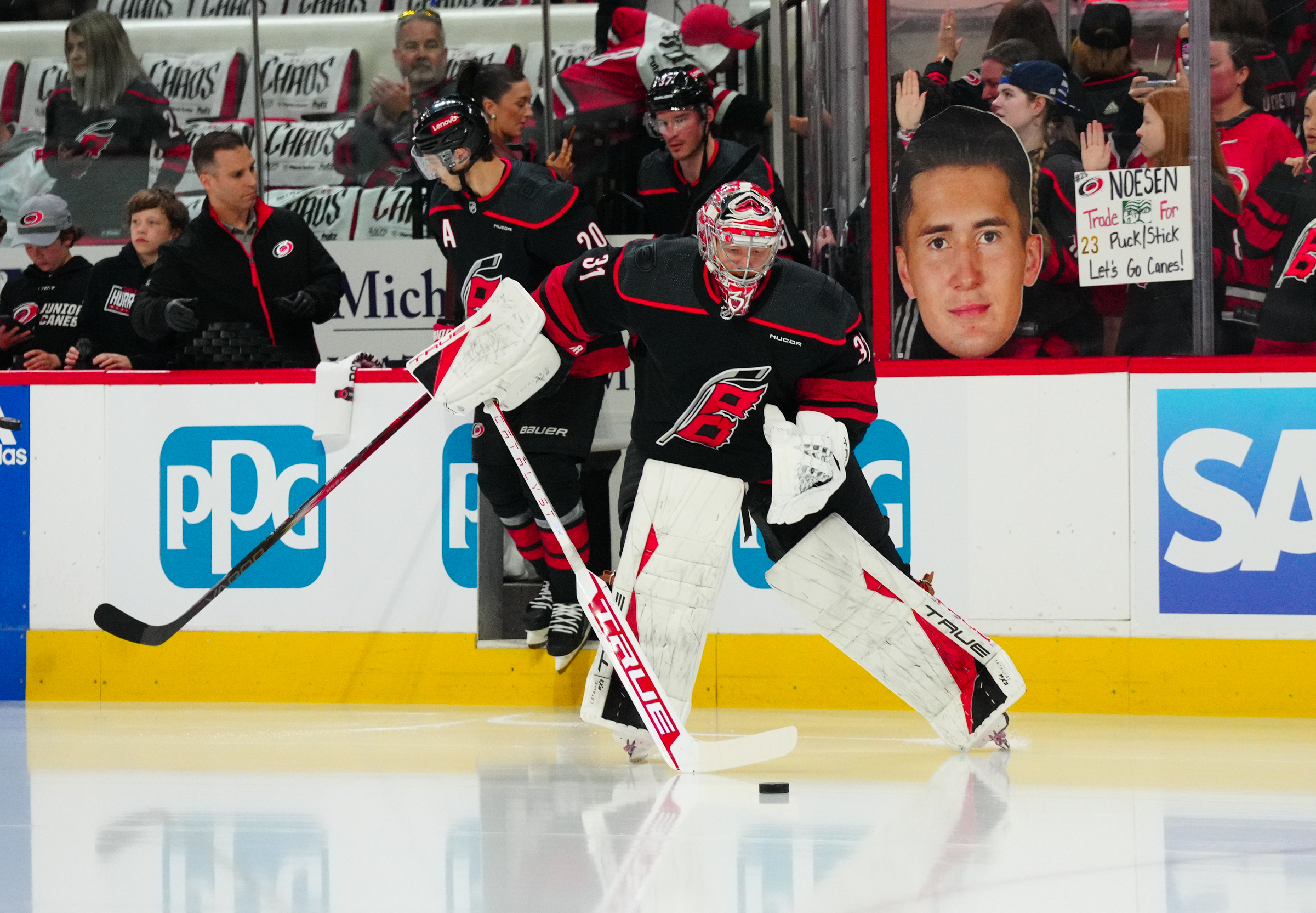The Blueshirts are moving on, and after dispatching the sad sack Islanders in 5 games, the Carolina Hurricanes punched their ticket to the second round too. The series will be fun, and goaltending may be the difference with two evenly matched teams. This round, they face an extremely talented goalie, as we dive into our Frederik Andersen goaltending style analysis.
Wow, another goaltending style analysis? In the same playoffs? Somebody tell Dave I’m filing an OSHA complaint. I want OT and hazard pay.
Let’s take a look at what the Rangers are up against in the 34-year-old Dane; his style, strengths and weaknesses, and ponder important questions like “why isn’t he related to a Rangers player?”.
I’m going to be upfront with my bias here. I am not a Freddy Andersen guy. I do think he has some very tangible strengths, but I do not think his results (especially lately) are commensurate with his talent. In my opinion, he’s basically the goalie equivalent of a systems quarterback. With my admitted biases out of the way, let’s break down Andersen’s game in a little more detail, shall we?
Stance

The foundation of Frederik Andersen’s entire style is centered around his size. He cuts an imposing figure at 6’4” and approximately 250 lbs. His stance is more of a wide set, maximizing his lateral coverage in his presentation to the shooter. His body posture is slightly more upright than a stance of this width would typically indicate, which opens his chest and exposes less in the top corners. This obviously changes during movement, but his set stance maximizes coverage.
Crease Movement/Depth
This theme continues with Andersen’s movement around the net mouth. His angles are excellent and his puck tracking is well above average. The name of the game for Andersen is taking away the perception of space from the shooter.
He plays a modest depth, which makes sense, given that he isn’t the strongest skater. He needs to make sure he doesn’t wander too much, as he lacks the higher-end mobility that would allow him to recover more efficiently.
Strangely, though, while he plays fairly disciplined with his angular approach and concise lateral movement, his technical execution can lack around the posts, which can put Andersen out of position on rebound chances in tight.
Performance
This season’s performance is a very difficult analysis to derive meaningful information from. Andersen was sidelined with a blood clot issue and only played in 16 games down the stretch. Granted, he played exceptionally well, but a small sample size and a very talented team in front of him leave his basically A+ stats and analytics devoid of real context.
His injury issues over the last two seasons have limited him to 50 out of 162 team games (approx. 30%). Given his age, it’s very difficult to project a true talent level when that much time has been missed. Throughout his career, Andersen has been a generally above-average, if not great goaltender, and I have a hard time believing that he magically found another gear in his mid-30’s.
Equipment

From an equipment perspective, Andersen uses True Catalyst PX3 goalie pads. For the uninitiated, back in 2021, legendary goalie equipment company Lefevre (who previously manufactured KOHO, Reebok, and CCM goalie equipment) partnered with True to create the line for the brand. Many previous Reebok/CCM users subsequently switched over to True. The Catalyst PX3 line is basically a previous CCM E-Flex pad with some technological advancements. A somewhat vanilla, but extremely well-made, high-performance pad.
The odd quirk about Andersen’s gear is that he uses 34+2 inch size pads, which is quite short for a goaltender his height. (For reference, I’m about 6’2” and use 36+1 inch pads). Where this is helpful is that the shorter thigh rise helps eliminate interference between the tops of the pads while moving, but it sacrifices five-hole coverage. As always with equipment, it comes down to what the goalie is most comfortable in.
Exploitable Weaknesses
Andersen is a big, patient goaltender who excels at cutting down angles, controlling rebounds, and taking space away from shooters. He has an excellent glove hand and very good lateral extension in tight.
That being said, Andersen is a bit sloppy technically and a weaker skater. His frame allows him to cover quite a bit of ground laterally, but it is through extension, rather than true mobility. His weight distribution routinely gets out of whack during scrambles and his game is somewhat overly dependent on rebound control. If he doesn’t vacuum up pucks efficiently, stray rebounds will put him into compromised positions.
From the “water is wet” department of hockey analysis, the strategy for the Rangers should be centered around generating HD chances, getting pucks to the net and looking for rebounds. The more they can remove Andersen from the controlled, comfortable elements of his game, the more success they will have. With the team in front of him, Andersen is more than good enough to stifle even a Rangers-level offense if they can’t get to the dangerous areas of the ice.
Conclusion
As I said at the outset, I’m not a big Andersen guy. I get big Mike Vernon vibes (dated reference, I know), as a goalie who is good enough to win a Stanley Cup, but he will do it with a team that just needs their goalie to be competent. I don’t see him as a “steal a series” type talent.
The Rangers, in my opinion, have a decided goaltending advantage (as they would in pretty much any series), so if the Rangers can beat the Hurricanes on a team-wide basis, I don’t think Andersen will stand in their way. If the Rangers are on the short end of the overall play, they will need Shesterkin to outplay him by a decent margin. Either way, it looks like we are in for a hell of a series.
More About:Goaltending Playoffs
